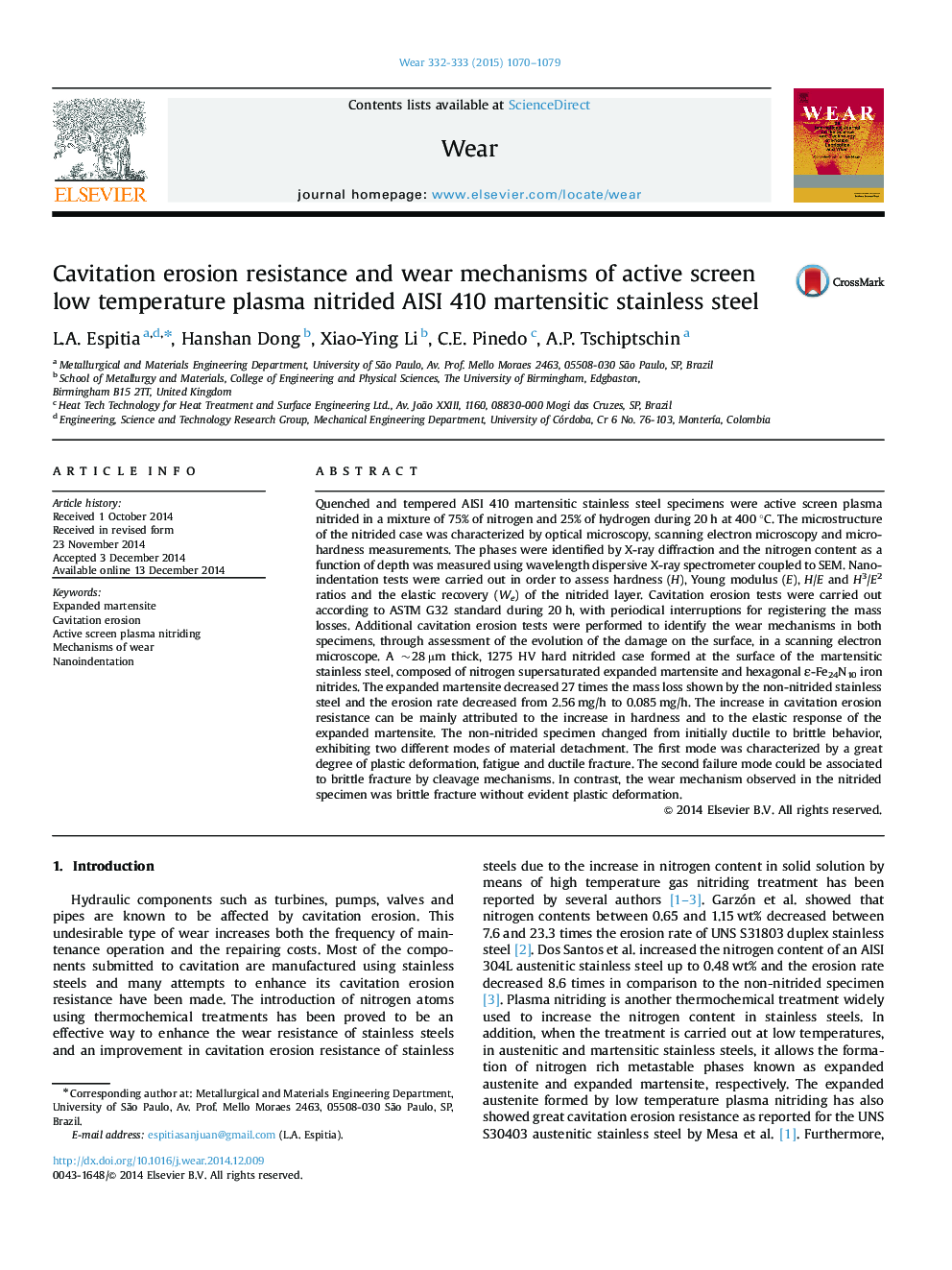| کد مقاله | کد نشریه | سال انتشار | مقاله انگلیسی | نسخه تمام متن |
|---|---|---|---|---|
| 617116 | 1454975 | 2015 | 10 صفحه PDF | دانلود رایگان |

Quenched and tempered AISI 410 martensitic stainless steel specimens were active screen plasma nitrided in a mixture of 75% of nitrogen and 25% of hydrogen during 20 h at 400 °C. The microstructure of the nitrided case was characterized by optical microscopy, scanning electron microscopy and microhardness measurements. The phases were identified by X-ray diffraction and the nitrogen content as a function of depth was measured using wavelength dispersive X-ray spectrometer coupled to SEM. Nanoindentation tests were carried out in order to assess hardness (H), Young modulus (E), H/E and H3/E2 ratios and the elastic recovery (We) of the nitrided layer. Cavitation erosion tests were carried out according to ASTM G32 standard during 20 h, with periodical interruptions for registering the mass losses. Additional cavitation erosion tests were performed to identify the wear mechanisms in both specimens, through assessment of the evolution of the damage on the surface, in a scanning electron microscope. A ~28 µm thick, 1275 HV hard nitrided case formed at the surface of the martensitic stainless steel, composed of nitrogen supersaturated expanded martensite and hexagonal ε-Fe24N10 iron nitrides. The expanded martensite decreased 27 times the mass loss shown by the non-nitrided stainless steel and the erosion rate decreased from 2.56 mg/h to 0.085 mg/h. The increase in cavitation erosion resistance can be mainly attributed to the increase in hardness and to the elastic response of the expanded martensite. The non-nitrided specimen changed from initially ductile to brittle behavior, exhibiting two different modes of material detachment. The first mode was characterized by a great degree of plastic deformation, fatigue and ductile fracture. The second failure mode could be associated to brittle fracture by cleavage mechanisms. In contrast, the wear mechanism observed in the nitrided specimen was brittle fracture without evident plastic deformation.
Journal: Wear - Volumes 332–333, May–June 2015, Pages 1070–1079